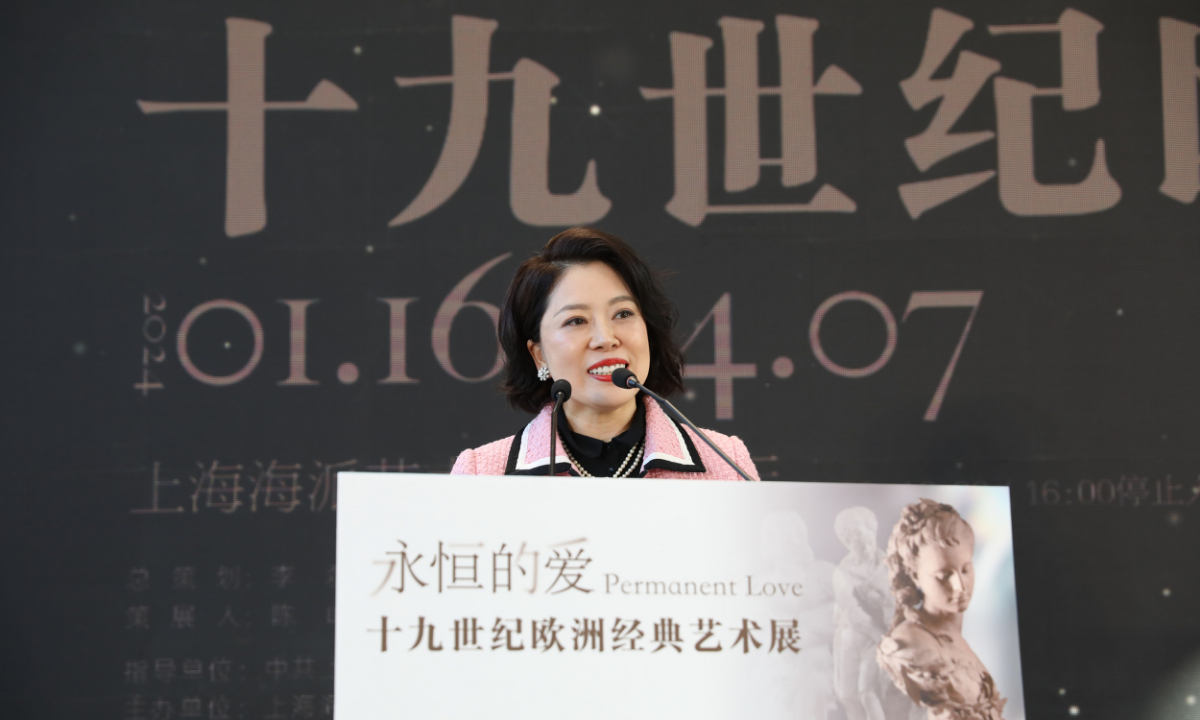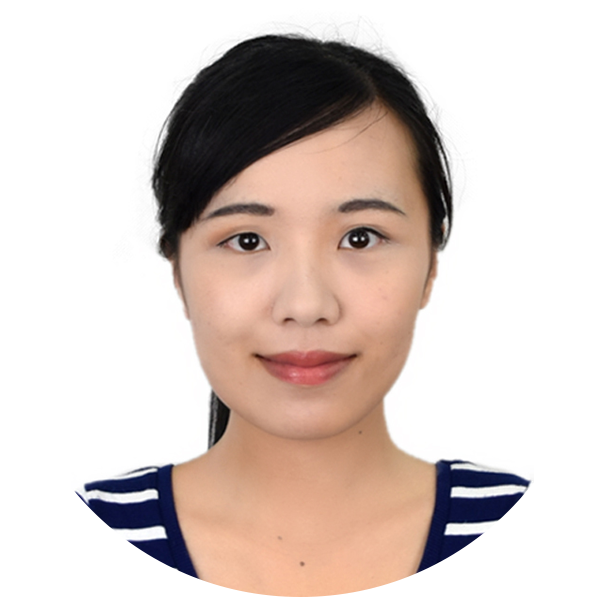
Wu Jing. Photo: Courtesy of Wu
January is a busy month for Wu Jing, a renowned French collector and curator of Chinese art. Wu is co-hosting two exhibitions that highlight art and culture exchanges between China and the West, particularly between China and France, which are currently on display in Shanghai. They have become must-visits for the city’s art enthusiasts with works by Western artists and valuable Chinese cultural relics.
2024 marks the 60th anniversary of the establishment of diplomatic relations between China and France. Wu’s two exhibitions, as part of cultural exchange events between the two countries this year, have been flooded with visitors almost every day.
“I’m excited about contributing to the two exhibitions in China in this special year,” Wu told the Global Times. “[I feel pleased] to let more Chinese visitors know about French art and culture, and feel the wonderful chemistry between the two civilizations.”
Beyond expectations
The two non-profit exhibitions are called Glory of Bronze Civilization: A Dialogue between Sanxingdui and Auguste Rodin across Space and Time, and Permanent Love: Classic 19th Century European Artworks. They opened in Shanghai on December 14 and January 15, respectively.
Glory of Bronze Civilization showcases millennium-old intricate bronzes from China’s renowned Sanxingdui Ruins together with sculptures by French master Auguste Rodin. Permanent Love displays dozens of classic European artworks dating back to the 19th century.
Wu is director of the Rodin Art Center (Rodin Museum China Branch), a sister location of the Paris-based Rodin Museum. She said that the Rodin sculptures at the two ongoing exhibitions in Shanghai are all displayed without glass cabinets, so that visitors can get closer to these artistic works.
The popularity of the two exhibitions has been “beyond expectations,” Wu said. The Glory of Bronze Civilization saw nearly 60,000 visitors within a month, a very large number for a small-scale exhibition, she added.
The two exhibitions attract visitors of all ages, from people in their 60s carrying professional cameras to young art students who draw pictures of the sculptures on display. “Some students said it’s rare for them to see so many prominent works by classical Western masters,” Wu said.
As co-host of the two exhibitions, Wu often serves as a volunteer guide to introduce the exhibits to the visitors, sharing basic information and the interesting stories behind them. “I hope the visitors can have a more comprehensive and perceptual understanding of the sculptures, through which they may feel that they are not very far from these artworks.”
China-West communication
Wu is enthusiastically engaged in cultural and artistic communication between China and the West. In recent years, together with local organizations, schools and art institutions, she has cohosted many art exhibitions in Chinese cities like Shanghai, and Wenzhou in East China’s Zhejiang Province, where her ancestral home is located.
Many of the art exhibitions that Wu has been involved in have brought together Chinese and Western exhibits from different eras under the same theme, offering visitors a dialogue across time and space.
“The ongoing Glory of Bronze Civilization exhibition gathers Sanxingdui civilization together with Rodin’s sculptures. Despite their distinct time and space backgrounds, the two share a similar understanding of beauty and nature, and that is really impressive,” Wu told the Global Times.
“The world is a whole, and it’s necessary for the Chinese and Western civilizations to maintain exchanges,” she noted.
Hailed as a legendary figure among French collectors, Wu has personally collected more than 200 valuable European artworks including clocks, paintings, items of furniture and classical sculptures. Some of the exhibitions she has participated in have displayed artworks from her own collection, and Wu said she is glad to share them with the public.
Wu has even built a non-profit museum in China at her own expense. In September 2017, she opened her European Art Museum in Hangzhou, capital of Zhejiang, bringing art from her collection in Paris. It was open to the public for free.
Wu’s museum had received nearly 1 million visitors by the time it closed in early 2020. During that time, Wu cooperated with local universities, sharing with the latter many materials from the museum and its exhibits.
“I hope that through my efforts, more Chinese visitors can enjoy precious European art collections,” Wu said. “I think that people in China need this opportunity.”
Boosting people-to-people exchanges
The Rodin Art Center, as a key cultural exchange project under the theme of the 60th anniversary of China-France diplomatic ties, is expected to open in Shanghai in the middle of this year, Wu noted.
Wu is one of the growing number of individuals who are actively promoting people-to-people exchanges between China and France, particularly in the culture and art field.
“People-to-people exchanges are an important supplement for the official exchanges between the two countries,” Wu said. “We are like a bridge, directly linking the two peoples.”
Wu hopes that with the continuous efforts of the many people-to-people exchange “envoys” like her, who are committed to non-profit China-France cultural and art events, “people of the two countries can know more about each other, and each other’s cultures,” she said.

